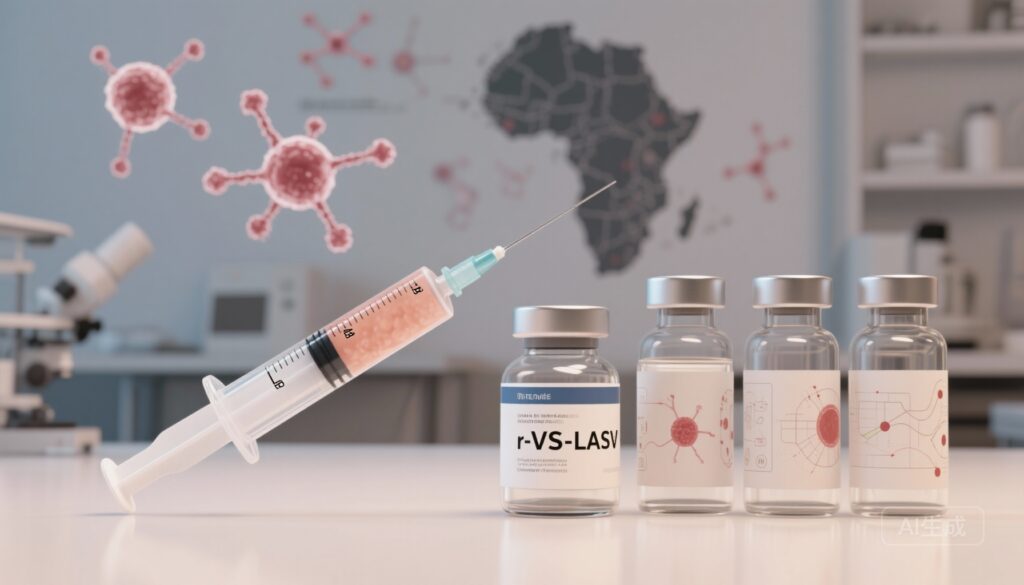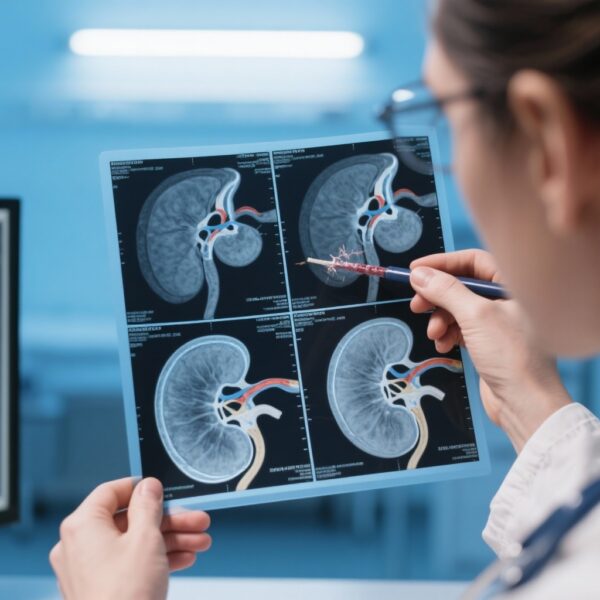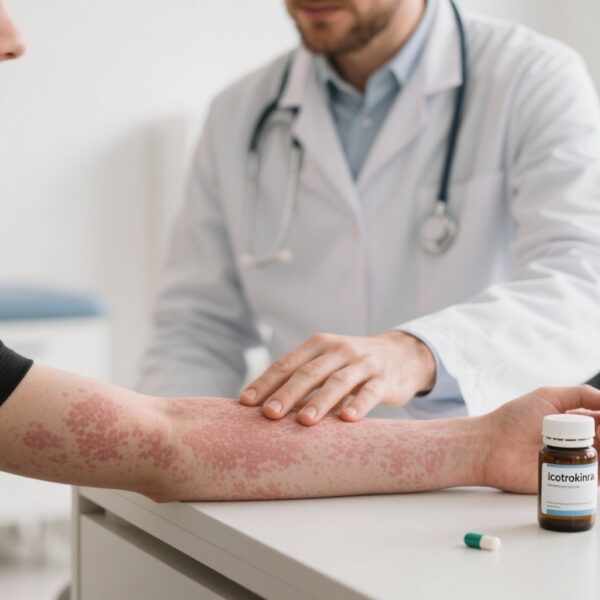Highlight
– The replication‑competent rVSVΔG‑LASV‑GPC vaccine induced robust binding and neutralizing antibody and cellular responses in healthy adults across a wide dose range.
– No vaccine‑related serious adverse events or sensorineural hearing loss were observed; reactogenicity was dose‑dependent and transient.
– No infectious vaccine virus was recovered from plasma, urine, or saliva, and immune responses cross‑reacted with multiple Lassa virus lineages.
Background
Lassa fever is a zoonotic viral hemorrhagic disease endemic in parts of West Africa that contributes substantially to regional morbidity and mortality. Estimates vary by source and year, but Lassa virus (LASV) is thought to cause tens of thousands of symptomatic infections and several thousand deaths annually, with frequent nosocomial transmission and substantial risk to health‑care workers. There is no licensed vaccine for Lassa fever, and prevention currently relies on infection control, rodent control, and supportive care. The unmet need for an effective vaccine is high given the disease burden, occasional international spread, and the potential for epidemic amplification.
Recombinant vesicular stomatitis virus (rVSV) vectors have been successfully deployed for Ebola virus vaccines (rVSV‑ZEBOV), establishing a precedent for replication‑competent single‑dose vectored vaccines that elicit rapid immunity. rVSVΔG‑LASV‑GPC is a replication‑competent rVSV vector in which the VSV glycoprotein gene is replaced by the glycoprotein complex (GPC) of Lassa virus, designed to present LASV antigen in a manner that stimulates both humoral and cellular immune responses.
Study design
This randomized, double‑blind phase 1 trial enrolled 114 healthy adults aged 18–50 years at sites in the United States and Liberia. Participants received either placebo or one of several dosing regimens of rVSVΔG‑LASV‑GPC administered intramuscularly: single doses of 2×10^4, 2×10^5, 2×10^6, or 2×10^7 plaque‑forming units (PFU), or two doses of 2×10^7 PFU given 6 to 20 weeks apart. The primary endpoint was safety as assessed by solicited and unsolicited adverse events (AEs). Because Lassa fever can cause sensorineural hearing loss, formal audiometric testing was performed pre‑ and post‑vaccination. Secondary endpoints included measurement of binding and neutralizing antibodies against LASV GPC, cellular immune responses, and detection of vaccine vector‑derived viral RNA and infectious virus (PFU) in plasma, urine, and saliva.
Key findings
Safety and reactogenicity
No vaccine‑related serious adverse events were reported. Local reactogenicity (injection‑site pain, erythema) was minimal across doses. Systemic reactogenicity (fever, myalgia, fatigue, headache) occurred in a dose‑dependent manner and ranged from mild to severe in isolated cases, but events were early onset and transient. The overall tolerability profile mirrors experience with other rVSV‑vectored vaccines where early systemic symptoms can occur but resolve within days.
Importantly, formal audiometric testing detected no vaccine‑associated sensorineural hearing loss in study participants. Given the documented association of Lassa infection itself with hearing sequelae, inclusion of audiometry in the safety battery was a critical methodological strength of this trial.
Vector detection and shedding
Vector‑derived viral RNA was assessed in plasma, urine, and saliva; although transient rVSV RNA signals were identified (as expected with a replication‑competent vector), investigators did not recover infectious vaccine virus (PFU) from plasma, urine, or saliva at the time points tested. This finding reduces concern about shedding of infectious vector at the tested timepoints and in this population, though the detection window and sampling density impose limitations on absolute conclusions about shedding risks under all conditions.
Immunogenicity
All dose groups induced robust humoral and cellular immune responses. Binding antibody titers against LASV GPC rose substantially above baseline across doses and remained durable over the follow‑up period reported in the paper. Neutralizing antibody responses were detected and were cross‑reactive against multiple LASV lineages common in West Africa. Cellular responses (likely measured by ELISpot and/or intracellular cytokine staining, per standard vaccine immunology practice) were also robust and durable, supporting the induction of a coordinated adaptive immune response rather than an exclusively humoral profile.
The study reports immunogenicity across a broad dose range. Even lower doses produced measurable responses, while higher doses increased reactogenicity without apparent safety signals. The two‑dose regimen at 2×10^7 PFU was evaluated but the paper emphasizes that single doses across the range produced durable immune activation, consistent with the single‑dose goal that has been a key driver for rVSV vaccines previously.
Clinical and translational context
These phase 1 findings position rVSVΔG‑LASV‑GPC as a promising Lassa vaccine candidate. The absence of serious safety signals, lack of detectable vaccine‑derived infectious virus in bodily fluids, and the generation of cross‑lineage neutralizing antibodies and cellular immunity are collectively positive early indicators for both safety and potential effectiveness.
Comparison with prior rVSV‑vectored vaccines is informative. The licensed rVSV‑ZEBOV Ebola vaccine similarly produced transient reactogenicity and robust immunogenicity and demonstrated effectiveness in ring vaccination trials. rVSVΔG‑LASV‑GPC leverages the same platform advantages — single‑dose potential, strong innate/adaptive stimulation — while raising vector‑specific considerations such as preexisting anti‑vector immunity (limited for VSV) and replication‑competent vector biology that merit continued monitoring.
Expert commentary and limitations
Strengths of the trial include its randomized, double‑blind design; enrollment in both non‑endemic (United States) and endemic‑region (Liberia) settings; formal audiometric surveillance; and comprehensive immunologic assays including cross‑lineage neutralization. Funding by CEPI and NIAID supported these rigorous methods and enrollment diversity.
However, as a phase 1 study, the trial has inherent limitations that temper immediate policy conclusions. The sample size (114 participants) and healthy adult age range (18–50 years) limit detection of rare adverse events and exclude key target populations such as children, pregnant persons, older adults, and immunocompromised individuals. The trial was not designed to assess vaccine efficacy against clinical Lassa fever, so the immune correlates of protection for LASV remain undefined and it is not yet clear which measured immune parameters — binding titers, neutralizing antibody titers, specific T‑cell subsets — will translate into clinical protection.
Although no infectious vaccine virus was recovered from tested samples, the temporal sampling schedule may miss brief windows of shedding. Continuous or more frequent early sampling in follow‑on studies, and evaluation under real‑world conditions (higher comorbidity burden, concurrent infections) will be important. Additionally, long‑term durability beyond the reported follow‑up interval and the potential need for boosters remain unanswered.
Generalizability to endemic populations will require larger trials in West Africa with sufficient power to evaluate safety signals, immunogenicity across diverse genetic backgrounds, background exposures, and real‑world effectiveness. Special populations such as pregnant women and pediatric cohorts will need careful, stepwise evaluation given the replication‑competent nature of the vector.
Implications and next steps
These data support progression to larger phase 2 and efficacy trials in LASV‑endemic regions to address key knowledge gaps: vaccine efficacy against symptomatic Lassa fever, durability of protection, optimal dosing and schedule (single vs. two‑dose), immune correlates of protection, safety in vulnerable populations, and operational considerations such as thermostability and manufacturing scale‑up.
Operationally, an effective Lassa vaccine would have several deployment scenarios: pre‑exposure immunization of at‑risk populations (health‑care workers, residents in hyperendemic areas), ring vaccination during outbreaks, and potential integration into routine immunization if long‑lasting protection and safety in children and pregnant persons are demonstrated. Vaccine strategy will also depend on cost, cold chain requirements, and production capacity — domains where CEPI and global partners play important roles.
Conclusion
The phase 1 trial of rVSVΔG‑LASV‑GPC demonstrates an encouraging balance of acceptable safety and strong immunogenicity in healthy adults. The vaccine elicited binding and cross‑lineage neutralizing antibodies and cellular responses across doses, caused only transient reactogenicity, and did not produce detectable infectious vector shedding in tested fluids. These results justify advancement to larger trials in endemic settings to establish efficacy, duration of protection, and safety in broader populations. If subsequent trials confirm clinical protection and acceptable safety across target groups, rVSVΔG‑LASV‑GPC could become an important tool for reducing the burden of Lassa fever in West Africa and for outbreak control.
Funding and clinicaltrials.gov
Funded by the Coalition for Epidemic Preparedness Innovations (CEPI) and the National Institute of Allergy and Infectious Diseases (NIAID). ClinicalTrials.gov number: NCT04794218. Pan African Clinical Trials Registry number: PACTR2021106625781067.
References
1. Malkin E, Zaric M, Kieh M, et al.; rVSVΔG‑LASV‑GPC Study Group. Safety and Immunogenicity of an rVSV Lassa Fever Vaccine Candidate. N Engl J Med. 2025 Nov 6;393(18):1807‑1818. doi: 10.1056/NEJMoa2501073. PMID: 41191941.
2. World Health Organization. Lassa fever fact sheet. (Access for current estimates and guidance available at WHO website.)
3. Henao‑Restrepo AM, Longini IM, Egger M, et al.; Efficacy of rVSV‑ZEBOV in Ebola outbreak settings — ring vaccination trial (for platform comparison). N Engl J Med. 2017;377(22):2345‑2355. (Representative reference for rVSV platform performance in outbreak vaccination.)



